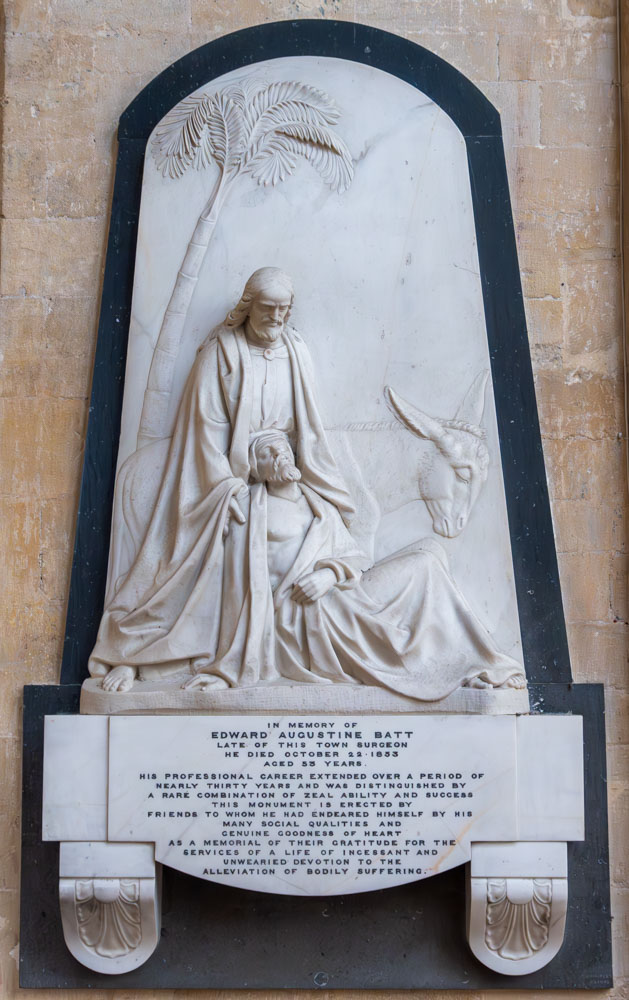
5. Batt Wall Memorial
The Batt Wall Memorial stands on the south side of the church, near two stained glass windows that are also dedicated to the Batt family. It commemorates Edward Augustine Batt (died 1836), a pioneering medical figure in Witney’s history.
In 1823, Edward Augustine Batt opened a house to care for twenty people suffering from what were then called “diseases of the mind.” The house was probably located at 33 High Street, later the site of the former Congregational Church. Although the institution closed just four years after his death, it marked an early and compassionate response to mental health care, rare in provincial England at the time. He also served as surgeon to the Witney Union Workhouse on Tower Hill, offering medical care to some of the town’s most vulnerable residents.
The Batt family continued this legacy of care and service. In due course they formed a trust to provide land for the building of a new school in the town: this became the Batt Church of England Primary School, which still bears the family name. They also gifted their large Market Square residence, known as The Hill or Batt House, to the rector and churchwardens of Witney. In 1930.
The memorial was sculpted by Thomas Grimsley (1800 to 1875), an Oxfordshire-born artist who worked from a studio in St Giles, Oxford. As well as memorial work, Grimsley designed three schools in Oxford, making him a particularly fitting choice to commemorate a family so closely connected with education and public welfare.
At the centre of the marble memorial is a carved image of the Good Samaritan: a striking and appropriate symbol of the family’s ethos of compassion and practical care.
Two stained glass windows nearby also honour members of the Batt family, adding further beauty and meaning to this part of the church.
Historical Significance:
The memorial is part of a broader pattern in St Mary’s where influential local families such as the Batt, Wenman, and Box families are commemorated in both sculpture and glass, reflecting their roles in the civic, medical, educational, and ecclesiastical history of Witney.

